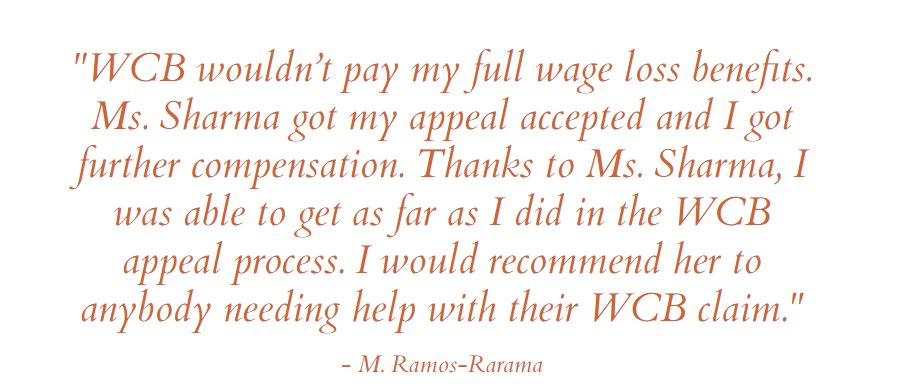
5 Lessons in Website Copywriting
A Copywriter is Born.
It wasn’t all that long ago I was navigating my way through the world as a self-dubbed “Creative Writer”. It wasn’t exactly lucrative, but it wasn’t exactly a choice either.
My inherent passion for storytelling and lust for wordplay had branded me a “writer”. What kind of writer that was exactly… I wasn’t so sure. I had a head-turning list of random day jobs to pay the bills but I reconciled my foibles through minimum wage gigs by referring to it as an in-depth ‘anthropological study’.
I’m sure plenty of writers can relate.
It was a series of case studies, I told myself, and I hoped all my weird jobs would reveal their worth eventually. Here are just a handful of environments I studied:
- Grocery Story
- Coffee Shop
- Visual Storyteller
- Breakfast Restaurant
- Corner Store
- Hardware Store
- A Weight Loss Program (possibly the worst)
- Hair Salon
- Aquarium
- University Newspaper (this one made sense)
(There were more.)
I would later come to discover this foray through a merry-go-round of day jobs, while writing on the side, was working towards something greater. A career breakthrough, if you will. If only someone had told me sooner — I was meant to be a copywriter *light bulb illuminates with the power of 1000 fiery suns*.
Contents
Introduction to Copy, The Art Form
Image: Unsplash
You don’t hear a lot of people geeking out over copywriting. IMO: A crying shame.
“Copywriter” may not be as romantic sounding as a struggling novelist or a Charles Bukowski, but copywriting is an art form nevertheless.
It’s an intricate word puzzle. There are character limits, rules, and formulas; tones and desired actions. Maybe you’re selling something, maybe you’re educating, maybe you’re trying to engage a social media following, maybe it’s this blog. Each avenue has limitations to work within which nurtures the creative force powering the words within it.
When you find yourself in a confined space, as a copywriter you must innovate ways to make the space different, exciting or interesting.
In an agency environment with different clients, projects, and mediums on task every day, versatility is required. Each avenue of copywriting requires a different strategy. It’s our job, as copywriters, to play by the rules and somehow – some way! – stand out and make total strangers do things.
That’s some Harry Potter-style wizardry, if you ask me.
Powerful copy marries both strategy and creativity. You need an equal helping of both to get the words to fulfill their promise of measurable results. It doesn’t hurt if you know about the market segment you’re writing about, which is where my confusing resume finally paid its dues — tenfold.
As I’ve taken my creative writing skills and molded them to the art of copywriting, I’ve learned a great deal about the common mistakes we make when approaching words in relation to their medium.
Here, I’m going to focus on website copywriting and give you some helpful tips to consider when writing up your website’s latest copy.
Common Lessons Learned in Web Copy
- Don’t Expect People to Read
- No One Likes Your Fancy Words (Apparently!)
- Less Is More – Effective
- Talk to Them Like a Friend
- That Key Message Doe
Let’s get started, shall we?
Don’t Expect People to Read
Image: Unsplash
Ouch. If you like writing and reading, this can be a tough pill to swallow. The truth is, long-form copy has it’s place, but it’s probably not on your website.
According to Hubspot, “55% of visitors spend fewer than 15 seconds on your website.” So if you’re expecting your visitor to take the time to read through hundreds of words and pull out the real substance for themselves, it ain’t gonna happen – no matter how great your copy is.
People don’t want to read. They want to know what’s important to them at a glance without the mental strain of reading a thoughtful essay.
So you can’t expect people to read but you need them to get the jist of what you want them to know. The best means to grab their attention is to take some cues from the ‘anthropological study’ handbook: take a step back, and ask yourself who you’re talking to.
At My Loud Speaker, we practice bullseye targeting. That means painting a detailed picture of the individual you’re speaking to through your copy. Take some time to visualize this person, what they do for fun, what they read in their spare time, what problems they have, and what problems you’re solving. Once you’ve got a clear picture of this individual, it’s much easier to resonate with them through your strategic web copy.
Once you’ve got your target in your crosshairs, you can use sleek and sexy headlines to capture their attention and persuade them to read more. Hook them with something bold, funny or unique to keep them in your grasp — but keep your headlines at around seven words.
And don’t just take my word for it. “On the average, five times as many people read the headline as read the body copy. When you have written your headline, you have spent eighty cents of your dollar,” says David Ogilvy. And he’s David freakin’ Ogilvy.
If those seven words are good, they are much more likely to read the next 150 words that you want them to. Just remain consistent and never stray from speaking to them on a personal level. That means addressing them directly (“you”) and keeping it intimate.
Lastly — let’s be honest — websites are often a tool and there is rarely a business website that isn’t hoping the visitor will take some kind of action. Instead of spending too much time and energy writing everything you think they’ll want to know, craft everything towards the desired action you want your visitor to take.
If you want the visitor to get in touch, drive them to get in touch.
If you want them to buy your goods, make your product pages easy to access and the focal point of your copy.
If you want your visitor to put on a hat made of bananas, you’re going to have a difficult time — but if your copy is incredibly persuasive, it could happen (please let me know if you’ve made this happen).
Copy is powerful but, on the web, you need to keep it simple.
No One Likes Your Fancy Words (Apparently!)
Image: Unsplash
Ouch again. This was another major blow to the Creative Writer in me. I have found that no one appreciates flowery, descriptive, fancy, and uncommon words. While they are great for poetry and fiction, you can toss them aside when approaching web copy.
You’ll get a lot of crinkled noses and furrowed brows, and feedback like “No one talks like this! Who says this word?”. You probably like those words because those are the words you use, but again — you’ve got to keep things simple.
Writers often get carried away in their wordgasms.
Depending on your organization, a great way to review and craft your web copy is to keep things conversational. If a word rolls awkwardly from your mouth, and you’ve only heard those words used in Jane Austen novels, you’re going to lose a reader or turn them off.
Recently, KissMetrics divulged that adjectives (those beloved, best of words!) are the evil power behind a marketing copywriters destruction. Getting carried away with adjectives is a distraction from the message you’re trying to deliver. Therefore, it’s great to go wild in your first draft and come back afterwards, slashing away the adjectives. It might hurt for a second but, once you take a look back, you’ll realize the work is better and stronger (better and stronger — both adjectives).
Wipe that creative tear from your eye and stick with the familiar so as not to alienate your visitor.
While fancy words like “effervescent” are difficult to work into web copy, they aren’t the only words you should steer clear from. Technical words and industry jargon can easily dissuade a site visitor from continuing to read.
The real magic of copy is when it can communicate what your organization is trying to say in a manner that anyone can understand. That means simplifying things down and writing it in a way that is easily digestible and clear. No fancy words, whether from the literary or industry realm.
Less is More – Effective
Image: Unsplash
Before you start writing up your web copy, you should ask yourself what you’re really trying to say. Is it five things? Three things? Seventeen things? I’ll touch on this in more detail a bit later when I jump into that ‘Key Message Doe’.
Coming from a creative and journalistic background, I was always drawn to the sheer perfection that is ‘editorial’. If you’ve read Vogue or Rolling Stone, you’ll know the steez: it’s descriptive, it’s sexy, it’s long and wordy. As a writer, it makes me ooze with excitement — usually articles boasting 6,000 words or more! Wordgasms galore! But as much as I love the style, it has no home on your website. Editorializing content pulls no love from marketers.
(Not to say you can’t insert some inspiration from Editorial writing. Gleam their headlines and sub-headers sometime as they are some of the best inspiration.)
Know what you want people to take away from your business — considering they might only be on the page for 15 seconds. The purpose of your web copy is really to convey a crystal clear message. It shouldn’t be fussy or take a great deal of explanation for it to make sense. You shouldn’t need context. This is also what makes copywriting an art form; it’s not easy.
Try and keep a strict focus on your homepage with more impactful copy. If you can say something in 5 words instead of 20, do it. If you’re more of a writer than an editor, find an editor to swoop down and pick your work apart for you.
Short, punchy sentences, balance, brevity, and simplicity will make visitors do things. They’ll do things you’re asking them to. Again, the Harry Potter wizardry of web copy is real.
Mind you, you don’t have to totally kiss away all heavy content.
You’ll be able to identify the site pages where the details and heavier copy are going to be appropriate if not necessary. When developing your sitemap, begin to strategize the areas where you’re going to need more copy and where you can get away with less.
Less is more — effective. Be your own most brutal editor and ask someone who is not a writer to review your work and give you feedback. They are often going to be the site visitors after all, and they won’t hesitate to tell you when they are not feeling it.
Trust me.
Speak Them Like Their Your Friend
Image: Unsplash
I see this happen all the time. A common mistake of many businesses is that you’re so close to the business itself that it can be challenging to change the way you talk about it. As someone within the company you’ll know the services, products and people intimately — and you’re going to talk like you do.
If you’re from an accounting firm, you’re going to know the ins and outs of taxes. But most people don’t really care about taxes or want to read about them. They just want to know you’re the professional they should trust to handle their taxes come April. That totally changes the way you approach your web copy.
“Some concepts are difficult to explain without using language your audience finds technical or esoteric. But if you don’t explain things at a level your customers understand, all you’re going to do is alienate them,” explains Adam Green, freelance copywriter and content strategist.
Similarly, if you own your own business and you’re extremely passionate about what you do and who you do it for, you’re more likely get carried away in telling your story. Your audience will appreciate your passion but they want to know how it’s relative to them and their needs. This also should be kept top-of-mind when approaching your web copy.
You’ll have to remind yourself on a regular basis that you’re not talking to your peers. You probably can cut the jargon, and you should ask yourself whether you’re writing it for you or for your audience. Would they really read this? Does this matter to them? (see: Bullseye Targeting) Don’t crowd them with things that you find important. It’s not about you — it’s about them.
Sometimes it’s hard to let go of things but, if you don’t let go, you’re just dragging your audience along. If you can’t seem to make the copy easy to understand for everybody outside of your business, or are struggling to cut your copy down, hire a copywriter who can.
It will really make a difference.
That Key Message Doe
Image: Unsplash
Ah, the one tennis ball. We’ve mentioned it before, and if you’ve been a lucky participant in some of our strategic marketing sessions or we’ve pitched you a proposal, we’ve certainly driven this marketing-essential home.
Before you get started on your web copy, you need to know exactly what your organization’s key message is. That one major thing you really want your site visitor to remember about you. You can’t expect anyone to carry around 20 tennis balls, so you’ve got to toss them one — it’s got to be right.
Every page of your website should have your key message shining through. That doesn’t mean you’ve got to regurgitate the same tagline over and over again, but the essence of the message should bleed through within the first 15 seconds of reading it. It is a persistent tennis ball bouncing against your target’s forehead.
Let’s take GKS Law firm, for example. You won’t see a repeated message, but you will see how the web copy is crafted to highlight her experience. And it doesn’t need to be just the copy itself. In this example, we used testimonials and short and sweet case studies to communicate Gail’s experience without outrightly repeating “experienced” over and over.
Image: GKS Law Firm
That’s an innovative means to communicate a key message — you don’t need to repeat the same thing over and over, but there are different ways to make an impact that will drive your message clearly. I should also note that GKS Law has been getting so many leads from their landing page, it was probably more than they bargained for.
But tons of leads is a pretty great problem for a new law firm to have.
Conclusion
I hope this blog post hasn’t stripped your initial zeal over your new web copy project. Over my past two years with My Loud Speaker, every website has been a strategic and creative obstacle course of words, and I’ve learned a lot in the process. I hope you take these lessons with you on your next writing endeavor.
With everything you’ve read today, you’re privy to all the web copy lessons I had to learn the hard way and, believe me, it has been tough to leave my flowery language at the door and letting go of my original writing strategy that “more is more!”.
Every random job I’ve had has helped me in my role as a copywriter. That anthropological study of human beings in different work environments, from corporate to mom-and-pop shops, had finally proved its worth.
Copywriting is an artform.
If you want to learn more about specific key elements of an effective marketing plan, read our 50+ page booklet on How to Write A Strategic Marketing Plan That Yields ROI – complete with explanations











